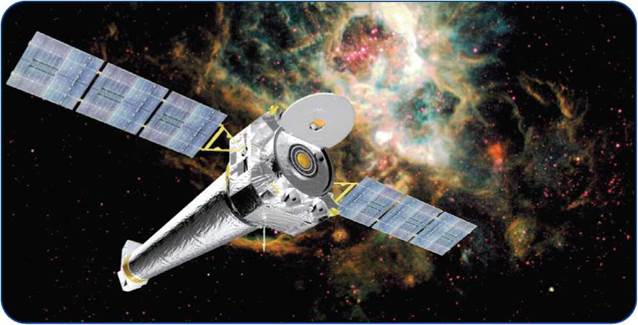INTRODUCTION
|
T |
he history of flight is a history of progress for humanity. Today, using air and space, we communicate and travel, defend ourselves against various threats, and explore the world around us and the vastness of space beyond. Pessimists can point to alarming increases in the destructive capacity of humans due to atomically armed bombers and intercontinental ballistic missiles. Optimists-such as myself—can point to the tremendous benefits that air and space travel have given us.
Flight is one of the oldest of human aspirations, and it is one that all peoples
|
|
have shared. They have incorporated visions of flying deities, spirits, and people in their various cosmologies, theologies, and mythic pasts. Yet for all this global interest, the actual achievement of human flight has greatly exceeded the expectations of those who dreamed what flight would give to humanity. They could hardly have conceived a world in which hundreds of millions of people each year journey from their homes to transportation centers designed for aviation, where they enter specialized aircraft to rise several miles off the ground and travel at speeds of hundreds of miles per hour across their countries and around the globe.
Indeed, those people who dreamed of flight largely did so at a time when they (with the aid of horses) could travel no faster than 6 miles per hour (9.7 kilometers per hour). This rate of mass mobility remained until the early years of the nineteenth century and the introduction of the steam railroad. By the beginning of the twentieth century, the steam locomotive had given people routine mass transportation at 60 miles per hour (97 kilometers per hour).
Then came the airplane, which, by the turn of the twenty-first century, was whisking its passengers over thousands of miles at an average speed of 600 miles per hour (970 kilometers per hour). If current interest in high-speed propulsion continues, it is possible that our descendents will usher in the twenty – second century at a speed of 6,000 miles per hour (9,700 kilometers per hour)— such is the pace of mass mobility in the aerial age.
The achievement of flight has represented the integration of diverse technologies and disciplines: those of flight itself, such as aerodynamics; those of engineering, such as structures and propulsion; and those of related fields, such as electronics and communications. It was this integration process that took the kite, boomerang, turbine, and firework from their first, simple forms to the sophistication of the winged airplane, the helicopter, the jet engine, and the solid-and-liquid-fueled rocket. Even the pioneers (the Wright brothers and rocket scientist Robert Goddard, for example) were masters at blending the various elements into a satisfactory whole.
Human flight was first achieved at the end of the eighteenth century with the invention of hot air and hydrogen – filled balloons. It was only after the invention of the internal combustion engine in the mid-nineteenth century, however, that practical flight became a possibility. Once the airplane and airship had been invented, extraordinarily rapid developments in the field of aviation followed.
At first, several European countries took the lead in the science and technology of flight. The United States, however, was particularly suited to air transportation because of its size. The nation emerged from World War I as the leading industrial power and soon began to dominate the aviation field. By the 1930s, the U. S. aeronautical industry was the largest and most structured in the world. Other nations also produced powerful aeronautical establishments.
This progress in aviation development was demonstrated in the opening months of World War II. Germany’s blitzkrieg warfare depended heavily on
|
|
a core of powerful air striking forces. Air battles between Britain and Germany in 1940 showed how significant the airplane had become as an instrument of war. The rest of the war that followed, on multiple fronts, revealed the often – surprising power of aircraft in both offensive and defensive combat. In fact, a lack of air power at critical junctures proved to be a more serious disadvantage than any deficits in land or sea power. World War II also highlighted the value of four new technologies that would play a huge role in future aerospace development: radar, the jet engine, the rocket, and the atomic bomb.
 |
In the mid-1900s, flight underwent three remarkable transformations. One was in high-speed aviation, demonstrated by the breaking of the sound barrier in 1947. Another was the application of the drag-reducing swept wing to jet aircraft. This wing design revolutionized both military and civil aviation and led to the rapid global mobility of the present age. The third, in 1957, was the onset of the Space Age, with the launch of the first Earth-orbiting satellite, Sputnik 1, by the Soviet Union.
The success of this small sphere hurtling through space overturned the whole aeronautical picture. Today, more than fifty years after that epochal event, it is fair to state that the Sputnik program marked the birth of the Space Age. The product of Sergei Korolev and a team of gifted Soviet designers, Sputnik demonstrated mankind’s ability to place a satellite in orbit around Earth.
As such, the mission anticipated all subsequent satellites and their varied applications. Weather observation, communication, strategic reconnaissance, warning, navigation, remote sensing- these are all now taken for granted.
Sputnik marked the onset of a brief but intensive rivalry in space between the United States and the Soviet Union. The stakes were, as is now realized, achievement of the first manned flight to the Moon. It was a race that the United States won, but at significant cost. The U. S. space agency NASA then focused on the Space Shuttle project, another major but costly step. Maintaining the Space Shuttle (in great part to support the creation of the complex International Space Station) proved to be a great challenge that has lasted from the 1980s into the 2000s.
Today, the United States is not alone as a space-travel provider. Commercial
use and privatization of space is increasing spaceflight greatly. It is a hopeful sign. Individual entrepreneurs, mirroring early aviation pioneers, are willing to invest their own resources in making space access available for many. Only time will tell how successful their various space ventures will be.
Today, the world’s goods are largely shipped by air, and the mass mobility of populations depends on air transportation. Aircraft and spacecraft routinely influence the day-to-day activities of humanity. Businesspeople think little of making multiple trips in a single week by air, just as their predecessors relied upon the train. Students and other travelers fly across continents and over seas, carrying the influence of their own culture with them to new places. Science and technology, the environment, and the world in which we live are all dependent on the aerospace industry and the global communications it provides.
For all of these reasons, it is well to have this encyclopedia. Broad in scope and straightforward in explanation, it is designed to meet the needs of students and those seeking to understand the history of flight and its functioning in the modern world. Only through works such as this can the youth of today be adequately prepared to face the wonderful world that awaits them within Earth’s atmosphere and the extraordinary discoveries yet to be made far out in the distant reaches of space.
Dr. Richard P. Hallion, 2008
Ґ
ABOUT THE CONSULTANT
Dr. Richard P. Hallion is the former senior advisor for Air and Space Issues, Directorate for Security, Counterintelligence, and Special Programs Oversight at the Pentagon, in Washington, D. C., and a member of the Senior Executive Service. For more than ten years (1991-2002), he was the historian of the U. S. Air Force.
Dr. Hallion is now president of the consultancy group Hallion Associates.
Dr. Hallion has broad experience in science and technology museum development and in research and management analysis. He has served as a consultant to various professional organizations. He also has flown as a mission observer in a wide range of high-performance aircraft.
Dr. Hallion is the author and editor of numerous books, articles, and essays on aerospace technology and military operations. He teaches and lectures widely. His numerous awards include: Citation of Honor, U. S. Air Force Association (1985); Commander’s Medal for Public Service, U. S. Army (1988); Louis Bauer Distinguished Lectureship, Aerospace Medical Association (1999); Associate Fellow and Distinguished Lecturer, American Institute of Aeronautics and Astronautics (2005); and the Harry B. Combs Award, National Aviation Hall of Fame (2006).
______________________________________________ J
|
|












